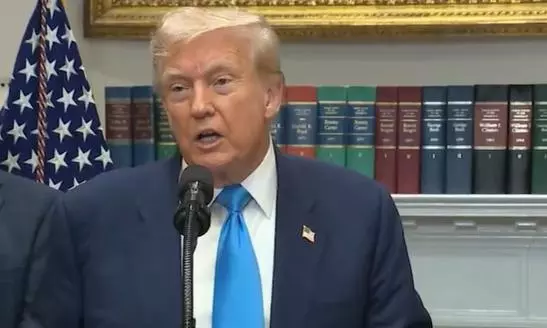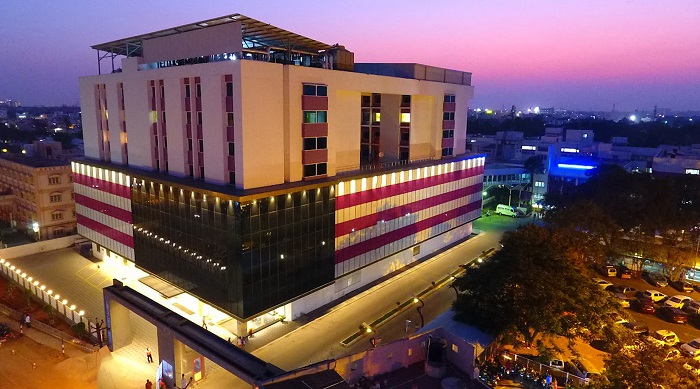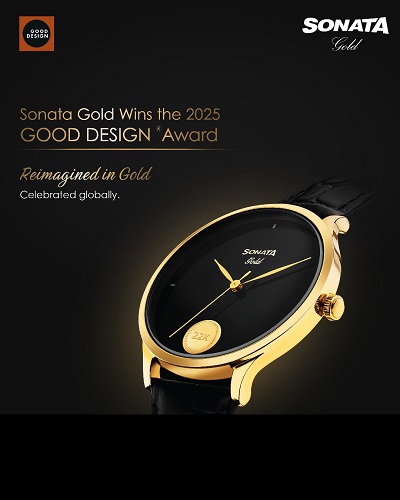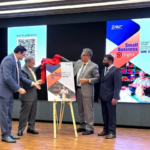Reg No. - CHHBIL/2010/41479ISSN - 2582-919X
Trump Imposes 25% Tariff on India With Penalty for Buying Russian Goods

Donald Trump Photo Credit-PTI
New Delhi: The much-awaited August 1 deadline for an interim trade deal between India and the United States has been extended, though talks between officials of both countries are continuing. Starting August 1, however, India will pay a 25 per cent tariff plus penalty over the country’s energy purchases from Russia.
US President Donald Trump announced a 25 per cent plus tariff on India from Friday. Calling India a “friend,” he said the US has done relatively “little business” with the country because of its high tariffs and “the most strenuous” and “obnoxious non-monetary trade barriers,” according to a social media post. While Trump did not elaborate on the penalty, he has been threatening additional tariffs on BRICS and Russian oil buyers.
“Remember, while India is our friend, we have, over the years, done relatively little business with them because their tariffs are far too high, among the highest in the world, and they have the most strenuous and obnoxious non-monetary trade barriers of any country. Also, they have always bought a vast majority of their military equipment from Russia, and are Russia’s largest buyer of energy, along with China, at a time when everyone wants Russia to stop the killing in Ukraine- All things not good! India will therefore be paying a tariff of 25 per cent, plus a penalty for the above, starting on August 1,” Trump wrote in Truth Social.
In response, the commerce ministry said the government is studying the implications. “India and the US have been engaged in negotiations on concluding a fair, balanced, and mutually beneficial bilateral trade agreement over the last few months. We remain committed to that objective,” the ministry said in a statement on Wednesday.
The ministry added that it attaches the utmost importance to protecting and promoting the welfare of farmers, entrepreneurs, and MSMEs. “We will take all steps necessary to secure our national interest, as has been the case with other trade agreements, including the latest Comprehensive Economic and Trade Agreement with the UK,” it said.
The industry remains cautiously optimistic as trade negotiations continue. Among the major export sectors, steel, aluminium, auto, auto parts, pharma, and iphones will remain unaffected, while textiles, gems and jewellery and marine foods may have to bear the brunt.
“It is unfortunate that political issues have become part of the trade talks. It is also not fair to put tariffs on our energy and defence needs. The principle of penalty sends the wrong message,” said Pankaj Chadha, chairman, EEPC. However, India will continue the trade talks.
“A 25 per cent duty by the US, along with an unspecified penalty linked to the oil and defence deal with Russia has only deepened uncertainty for businesses.
Without clarity on the quantum of the penalty, Indian exporters and US importers are left with no firm basis to calculate landed costs or assess how the tariff burden can be absorbed. This ambiguity disrupts supply chain planning and pricing strategies. However, given the strong momentum toward a Bilateral Trade Agreement (BTA) between India and the US, industry remains cautiously optimistic. Exporters see this as a temporary phase, hoping that the post-BTA framework will not only address such unilateral actions but also open significant opportunities for recovery and growth.” said Ajay Sahai, director general, FIEO.
According to Ajay Srivastava, founder of GTRI, there are several sectors which will remain unaffected. About $4 billion steel and aluminium exports will be charged 50 per cent, and $2.1 billion automobiles and auto parts will be levied 25 per cent with or without a deal. Exports of iphones, and pharmaceuticals will not be affected. Friday (i.e., August 1) also marks the end of the suspension period for tariffs imposed by President Trump on several countries, including India (26 per cent).
The baseline tariff of 10% remains. “India is now expected to accept higher tariffs of 20–25 per cent as intended by the US President until a final deal is concluded,” the official said. A US team is scheduled to visit India from August 25 for the next round of negotiations on the proposed Bilateral Trade Agreement (BTA).
The two sides concluded a fifth round of talks last week in Washington, discussing issues including customs and trade facilitation. India is seeking removal of the 26 per cent additional tariff and the easing of tariffs on steel and aluminium (50 per cent) and autos (25 per cent). These issues are central to the trade talks. In parallel, India has reserved its right under World Trade Organisation (WTO) rules to impose retaliatory duties.
YOU MAY LIKE THIS










